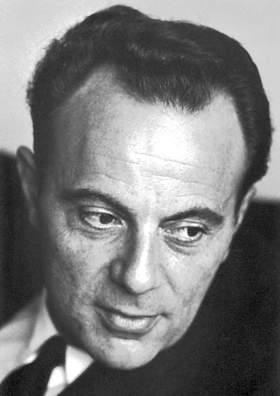François Jacob facts for kids
Quick facts for kids
François Jacob
|
|
|---|---|
 |
|
| Born | 17 June 1920 |
| Died | 19 April 2013 (aged 92) |
| Citizenship | French |
| Known for | Operon |
| Awards | 1965 Nobel Prize in Physiology or Medicine |
François Jacob (born June 17, 1920 – died April 19, 2013) was a famous French biologist. He won the 1965 Nobel Prize in Physiology or Medicine along with Jacques Monod and André Lwoff. They were honored for their amazing discoveries about how cells control their genes.
Jacob and Monod found a basic way that cells manage how much of certain enzymes they make. This control happens by changing how DNA is copied into RNA, a process called transcription.
Contents
How Cells Control Genes
In 1961, François Jacob and Jacques Monod explored a big idea. They thought that cells control how many enzymes they make. This control happens by changing how DNA is copied. This copying process is called transcription.
For a long time, scientists knew that cells could change. For example, bacteria could make different enzymes. They did this to fit their surroundings. This helped them use different foods.
Bacteria and Lactose
Imagine a bacterium in a sugary liquid. If the liquid has lactose sugar, the bacterium must adapt. It needs to bring the lactose inside. Then, it must break the lactose into simpler sugars. These simpler sugars are glucose and galactose. Finally, it turns galactose into glucose.
Scientists knew that bacteria make more enzymes for these steps. This happens when they are around lactose. But how did the cells know to do this?
DNA and Enzyme Production
Scientists learned that all proteins are made from DNA. Jacob and Monod showed how this works. They studied a bacterium called E. coli. They found special proteins in E. coli. These proteins stop the DNA from being copied into RNA.
When DNA is not copied, fewer enzymes are made. This means the cell can control which enzymes it produces. It only makes them when they are needed.
The Lac Repressor
One important discovery was the lac repressor. This is a special protein. It attaches to the DNA in a cell. When it's attached, it stops the cell from making enzymes that break down lactose.
The lac repressor is always present in the cell. It binds to the genes that make lactase enzymes. This stops the copying of DNA. So, no lactase enzymes are made. This happens when there is no lactose around.
How Lactose Changes Things
When lactose becomes available, something cool happens. The lactose changes into a molecule called allolactose. This allolactose then attaches to the lac repressor.
When allolactose attaches, the lac repressor changes shape. It can no longer stick to the DNA. This means the DNA can now be copied. So, the cell starts making the enzymes needed to digest lactose.
This system is like a smart switch. It makes sure the cell only produces lactose-digesting enzymes when lactose is actually there. This saves energy for the cell. The study of how genes are controlled is now a huge field in molecular biology.
See also
![In Spanish: [François Jacob para niños] In Spanish: [François Jacob para niños]](/images/thumb/5/5f/Kids_robot.svg/60px-Kids_robot.svg.png)

